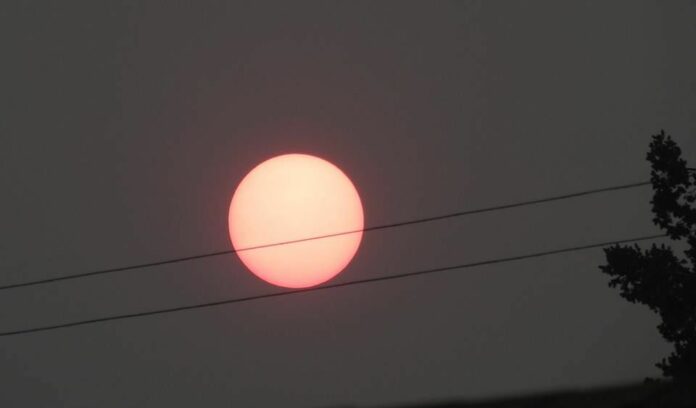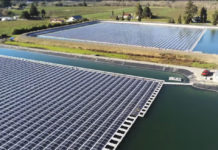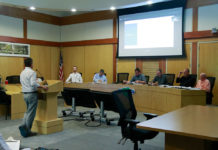Controversy exploded last week when local school districts decided to close, then open, and in a few cases, close again as smoke from the Camp Fire in Butte County reached Sonoma County. Parents took to social media to complain, and districts and the county’s superintendent scrambled to calm fears and frustrations.
The heavy smoke rolled in on Thursday, Nov. 8, and early on the morning of Nov. 9, a cascade of districts announced they were canceling school for the day, citing unhealthy air quality.
Most districts made their decision around 5 a.m., and by 9 a.m., every district in the county had closed. The Sonoma County Office of Education (SCOE) released a statement about the universal closures, which said, in part “Sonoma County’s 40 school districts make independent decisions whether to close school based on the air quality conditions in their area. In our role coordinating the announcement of school closures to the public, SCOE advises districts to err on the side of caution in protecting student health when making decisions to close because of air quality. This is because children, especially young children, have still-developing lungs and a higher rate of activity, which makes them more susceptible to the impacts of smoke. At 5 a.m. this morning, the air quality reading was quite poor and was predicted to decline rapidly, which has since happened. Based on this prediction, all Sonoma County school districts made the decision to close school.”
Parent reaction was generally positive to this decision, but some people questioned why the decision couldn’t have been made the night before, making it easier for working parents to procure childcare.
Monday, Nov. 12, was a holiday for schools (Veterans Day), and most schools then elected to remain closed on Tuesday, Nov. 13.
However, on Nov. 13, superintendents from various districts met at SCOE to hash out a plan going forward, and after several days of erring on the side of caution, emerged with a surprising decision. SCOE elected to set the threshold for school cancellation at an AQI of 275, almost 100 points above where the air quality had been on the previous cancellation days.
An AQI of 275 is considered “Very Unhealthy” by the Environmental Protection Agency, which states that an AQI of 201 to 300 “would trigger a health alert signifying that everyone may experience more serious health effects.”
On Nov. 9 the AQI in Sonoma County was 226, on Nov. 13 it was 172, which classified it as “Unhealthy.” On Wednesday, Nov. 14, when students were expected to return to class, the AQI toggled from the 130s to the 170s, making it “Unhealthy” or “Unhealthy for Sensitive Groups.” The EPA classifies sensitive groups as “children, older adults, and those with lung issues, such as asthma.”
In a letter, SCOE Superintendent Steve Herrington stated, “although an AQI level of 301 is the threshold for hazardous air quality for adults, since students are ages 4-18, a lower level was considered appropriate. This came in consultation with the county health director as well as guidance from the Centers for Disease Control . . . generally we believe students are in a safer air quality environment when they are in school. This is because schools typically use filtered air while many homes may not have this ability. As well, students have greater opportunities for indoor activities. While these standards provide a baseline for districts when considering the cancellation of classes, it is ultimately each district’s decision to determine what is best for their students and staff. Local factors could include availability of quality air filtration as well as regional air quality.”
Many parents were outraged and took to social media to let their districts and SCOE hear about it. Hundreds of comments piled up over the course of 24 hours. Typical comments pointed out that SCOE had changed its own guidelines for air quality from 2017 levels and also altered the standards utilized by the EPA. Most parents felt the appropriate cut off level was an AQI of 150, and many parents stated they would be keeping their students home until that benchmark was reached.
They also were quick to point out that both the Santa Rosa Junior College and Sonoma State University, whose populations would be considered at a lower risk than the younger students, had elected to continue to cancel classes. They also noted that the AQI closure level of 275 was significantly higher than neighboring Napa County’s.
Many accused SCOE and the school districts of being “all about the money,” and it was true that districts were fearful that they would not be compensated for the days they were closed due to air quality, since a disaster area had not been declared in Sonoma County. (On Nov. 16, State Superintendent of Public Instruction Tom Torlakson announced that districts could apply for waivers for reimbursement.)
Finally, many parents communicated their frustration that they couldn’t find out what mitigation or cleaning measures had been taken by the school, and some were offended by the supposition that the schools were a safer environment than their homes.
Herrington released an additional statement on Nov. 14, attempting to explain or clarify some points.
“We recognize that 275 AQI is an unhealthy air quality level. However, that does not mean that children are necessarily better off at home than at school in those conditions . . . Most schools have high-quality air filtration systems, while many homes do not,” said Herrington in the letter.
He went on to state that the difference in Napa and Sonoma County’s thresholds had to do with the different monitoring sites used. Sonoma County has elected to use PurpleAir.com, which he states is calibrated differently than other sites, resulting in higher numbers.
Herrington also makes clear the final decision to hold school lies with the districts and then the parents. He states that “ultimately, parents know what is best for their child based on his or her health needs” but also goes on to say that the decision to make an absence excused on unexcused lies with the district.
We reached out to various superintendents to get their views.
Jeremy Decker, the superintendent of Cloverdale Unified School district was not present at the meeting on Nov. 13, but said he has “taken the recommendations made by SCOE to heart. Be that as it may, prior to the recommendation, I was focused on an AQI of 200 as my mark. If the AQI was around 200 and trending down, I had planned to have schools open. If it was trending up, I had planned to close schools. We have been under an AQI of 200 on every day that we have been open this week. Based on the “Air Quality and Outdoor Activity Guidance for Schools” I have inferred that anything under 200 AQI is OK for students to be present at school and outdoors for short periods of time.”
Decker said he hasn’t had a lot of communication from angry parents but has heard from parents wanting to know the district plan, and added, “it’s a personal choice. The air quality affects all of us differently. Some parents have home filtration systems that allow students to be protected from the poor air quality, while others are much more safe being in our classrooms. Every situation is different.”
Students who were kept home due to air quality will receive excused absence, and Decker said Cloverdale experienced only a minimal drop off in attendance—93 percent from a normal level of 95 percent.
Brandon Krueger, the Superintendent from Windsor did attend the meeting. “I felt that there was a serious discussion, including health experts, and I was more informed,” he said. “The AQI standard was established for uniformity and with the guidance of public health professionals.”
But he added, “I have made decisions as of late to stay away from the very unhealthy range even though we are supported to hold school as long as outdoor activities are indoors and that we use the EPA and CDC guidelines. I will take local information, such as site conditions, into consideration as well when making decisions.”
Krueger said he had heard from a number of concerned parents and that attendance in Windsor was five percent lower than average. Like Cloverdale, Windsor absences would be excused.
“I understand when parents are concerned about their children’s health if attending school at that AQI level,” he said.
In a letter written on Nov. 13, Healdsburg Superintendent Chris Vanden Heuvel, who did attend the meeting, told district families that “in anticipation of opening, we have gone through classrooms, vacuuming and wiping down surfaces to eliminate any particles from the extreme smoke event on Thursday through Saturday. We also are inspecting air filters and replacing as necessary. Finally, we do anticipate having an indoor schedule for the rest of the week, where students will eat and have lunch indoors. PE and athletic practices/games will also be modified as necessary. If you do choose to keep your student home over the course of the next week because of air quality issues, please let your school office know, and we will code the absence as excused.”
Absences statistics in Healdsburg were not known as of press time.
One school district that chose not to reopen after the Nov. 13 meeting was Gravenstein Union, a K-8 district in Sebastopol. In an advisory sent to parents, Superintendent Jennifer Schwinn stated, “Today SCOE has provided the following chart to help guide school closures. However, I confirmed that it is still a local decision whether a district closes. I have advocated that we follow the guidelines set by Napa’s County Office of Education, where schools close when air quality is in the “unhealthy” range. I feel that is a safer guideline for students and staff and better follows the advisory from the EPA and the Pediatrics Association . . . I did not feel it was right to open school in these conditions.”
The notice also described the actions being taken to prevent bad air from being pulled into classrooms, and the removal of ash and particulates from the outside surfaces as well as the insides of classrooms. On Thursday, the AQI for the Gravenstein area dropped below 150 and classes resumed, however when it spiked back above 200 on Friday, Schwinn once again closed schools.
At a meeting of the West Sonoma County Union High School District board on Nov. 14, Kellie Noe, a board member, suggested that, “If this is the new normal, the district could incorporate ‘fire days’ into its yearly schedule the way schools in colder climates incorporate ‘snow days.’”









